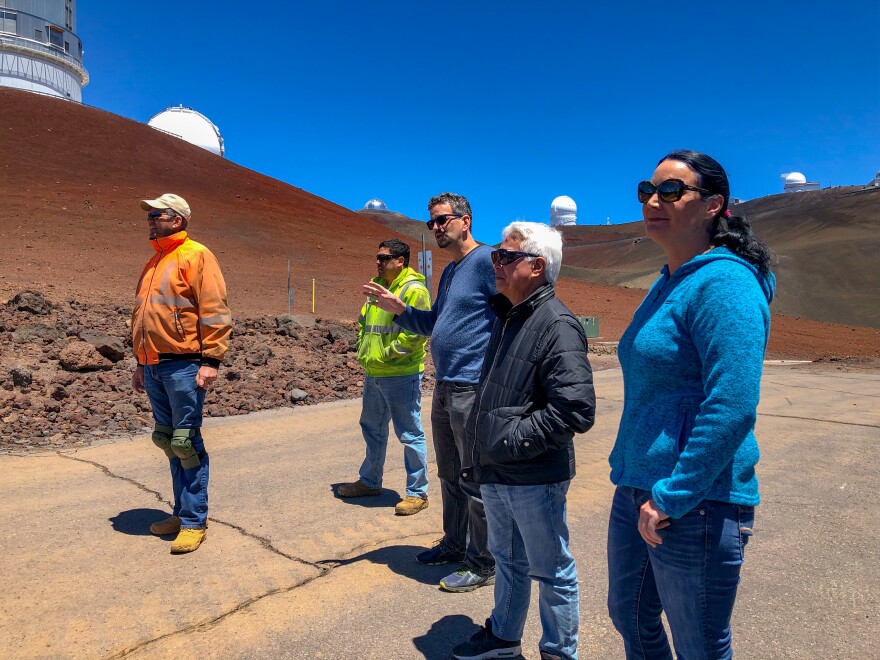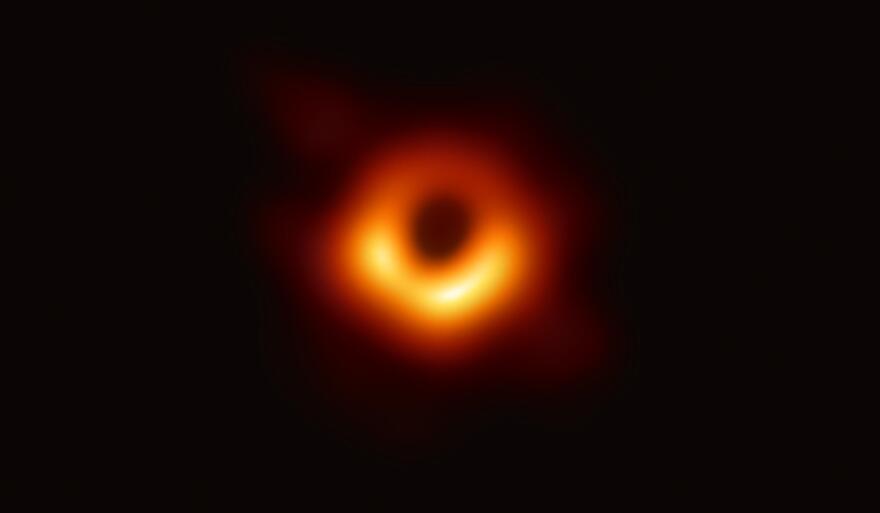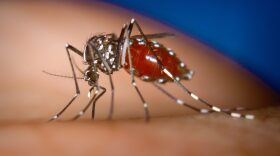Scientists are celebrating a milestone today. Astronomers have captured the first ever image of a black hole. The image was produced by a network of telescopes around the world, including two on Hawai?i’s own Mauna Kea.
Scientists unveiled a snapshot of a black hole some 55 million light-years away from Earth. Black holes have eluded astronomers for more than a century since Einstein first theorized their existence. Hawai?i-based astronomer Geoffrey Bower participated in the discovery.

“We are going into a regime where no one has ever gone before,” says Bower, “We have Einstein’s theory of general relativity, over a hundred years old right now…and it works! It succeeds. Everything that we’ve seen is exactly what is predicted by his theory, and that is a beautiful, beautiful thing.”
The discovery was quite possibly the worst kept secret in the scientific world leading up to the international announcement. The image of the black hole looks like a blurry ring of fire shrouded in darkness.
“What we are seeing is the light that is bent by the strong gravity of the black hole,” says Bower.

Astronomer Jessica Dempsey works on Mauna Kea’s James Clerk Maxwell Telescope. Her telescope as well as Mauna Kea’s Submillimeter Array where Bower works joined six others around the world to produce the picture.
“The ability to image this is nearly impossible. You need an Earth-sized telescope in order to image something this tiny,” says Dempsey, “We can see such detail with this telescope that you would be able to see a lehua petal on the surface of the moon.”

The black hole will bear a Hawaiian name “p?wehi” meaning this embellished dark source of unending creation. Astronomers collaborated with renowned UH-Hilo Hawaiian Language professor Larry Kimura for this name.
“?O kekahi mea i k? i ke ?ano o ka l?ua wehewehe ?o ia ho?i in? ?a?ole i loa?a k?ia ?ano wehiwehi ma ha?i o k?ia p?, ?a?ohe kino maila ke ki?i,” says Kimura.
What stood out to me when they described this black hole was that without this “wehi” or adornment of light in the darkness, no image could be produced.

“The first thing I thought was with one word in Hawaiian, he’s described what took us six research papers of science to say,” says Dempsey.
P?wehi has its origins in the Kumulipo – a chant about the origins of the world from a Hawaiian perspective – and one that starts in darkness.

“Mea nui ka p? i? l?kou no ka mea h??ike wau ?a?ole na k?kou ka po?e o k?ia w? i ?ike i k?l? ua ?ike mua ?ia e ka po?e i mua o m?kou, ka po?e Hawai?i, ka ?ike Hawai?i i pa?a,” says Kimura.
The power of darkness was revered and scientists aren’t discovering something new as much as validating ancient Hawaiian wisdom.
Kimura says there are hundreds of forms of p? or darkness in this ancient chant. To which Bower says there are likely hundreds of black holes waiting to be captured.




